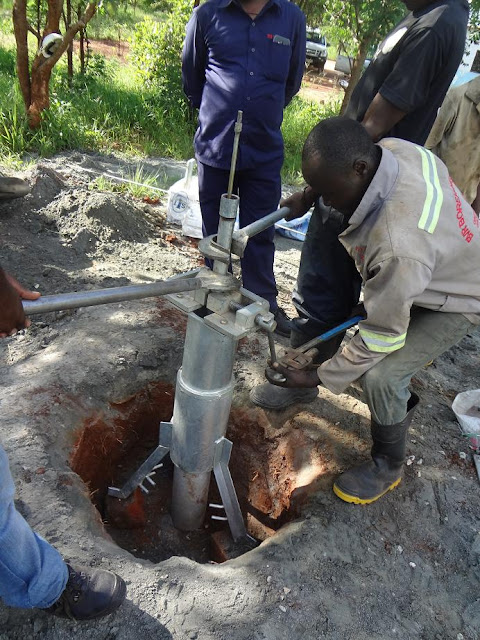Last January when we were at training in Johannesburg, we heard about a project that had just finished in Kinshasa, Democratic Republic of the Congo. The project involved 80 participants making 200 Maturation Kits to be given to young girls and women who had no affordable access to feminine sanitary pads.
Maturation Kits Prepared in the DRC

Part of the Southeast Africa Area Welfare Department 2015 Plan has been to Empower Women to act instead of being acted upon. In March, when we were able to start making our plans for 2015, we met with some women's groups in Lusaka to see what we could do to encourage these women. They wanted sewing machines, business training and literacy training. We could have given them sewing machines but they have no place to safely keep or use them. In talking to some of the Community Development, Mother and Child Health staff we mentioned the possibility of helping the women make maturation kits. They were receptive to the idea so we started making plans to do a project training 50 women from the community to make 120 kits. We were finally able to submit our plan to South Africa for approval after months of preparation and research into where to get the materials needed. Sister Bodily spent many hours making kits to determine the details of what and how it would work best for teaching the ladies how to assemble their own kits.
Here is our kit as we determined it should be made.
To be able to make 120 kits you have to make 240 shields (item just below the panties) and 960 pads (the two stacks of items on the right and bottom). From Sister Bodily's efforts we knew how much time it would take to do this and figured that we would need at least a couple of days to do the project. We also needed help from a group that knew how to sew. We came across some members that belong to a sewing club and they were willing to learn the process and then help with the project. We requested from the Community Development staff a list of the names of 50 women that would be participating. We finally received a list of 34 women. We scheduled the dates for the project with Community Development and let them know where we would hold the project. Because we only had names and no contact information we required the Comm. Dev. staff to notify the women when and where they needed to be for the workshop.
We prepared the Sewing Club with at training meeting at the Labala building a week before the project. Here Sister Bodily is teaching them the process.
We arranged for the use of the Libala Church building and set up the Relief Society room as a sewing room and 4 other rooms to support the production.
We also trained a District of missionaries to help us with coordination and quality control.
The first day of the project we set up the building, the sewing club showed up and the missionaries came to work. Unfortunately, the Comm. Dev. staff failed to inform the women that the project was happening so no one showed up to participate. The sewing club and the missionaries worked all day and produced enough kits for the 15 members of the sewing club to take a kit home with them. We cancelled the next day's activity because of lack of support from the government agency.
We had even catered lunch for the participants.
We learned many lessons from our attempted project. First, you have to find someone in the lowest level of government to help you with support. Second, our ambition would have killed us if everyone had showed up. It was a tremendous amount of work to get to where we were and we were exhausted after one day. Third, the members of the church are more dependable than the members of the community. So we had to regroup because we still have materials to make a lot more kits. We ended up communicating with the local officers, whose names we were finally given after the project flopped. We made plans with them to move forward.
We moved the location of the project from the Church building to the local Homecraft Center.
Here we have trained 2 groups of 10 women each in 2 half day sessions.
The participants are not able to complete an entire kit during our two, half day, workshops, but with the extra parts we have we are able to give them each a full kit at the end of the second day. We have now distributed half of our kits.
Here are some happy recipients with their kits in hand.
We will train a couple more small groups and then work with the sewing club to make the rest to donate to health posts/clinics where newborns are delivered, and rural areas where the women do not have the ability to learn to make their own kits.
























































